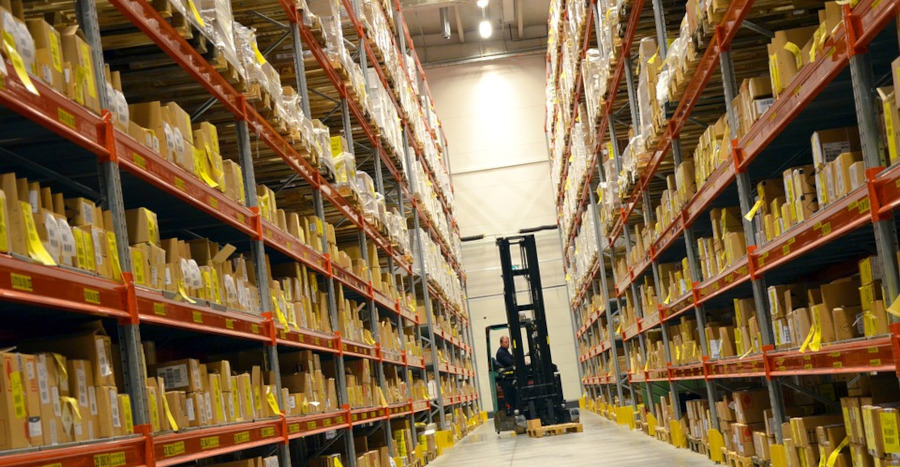The Entrepreneur's Guide to Setting Up a Small Warehouse

Setting up a small warehouse is an essential part of running a successful business. Whether you're an aspiring entrepreneur or a seasoned business owner looking to expand, having a well-organized and efficient workspace can significantly impact productivity and overall success. However, the process of setting up a warehouse can be overwhelming without proper guidance. In this informative guide, we will explore the key steps and considerations for entrepreneurs looking to establish their own small warehouse.
Assess Your Storage Needs
Before diving into the logistics of setting up a warehouse, it's crucial to assess your storage needs. Take stock of your products and carefully consider factors such as size, weight, fragility, and perishability. This assessment will help determine the size and layout requirements for your warehouse space. Depending on your findings, you may find that you only need to rent a small warehouse space to efficiently meet your needs.
Determine Warehouse Space Requirements
Once you have analyzed your storage needs, you can start planning the physical requirements for your small warehouse. Consider factors such as square footage, ceiling height, access points (loading docks or doors), aisle width, and security systems.
Choose an Appropriate Location
Selecting the right location for your warehouse is paramount to ensure smooth operations. Analyze factors such as proximity to suppliers and customers, transport access (highways or ports), labor availability, rental costs, and local regulations (zoning restrictions or permits). If your needs are more modest or budget-conscious, exploring options for small warehouse space for rent can also be a practical choice, providing flexibility without compromising on essential location advantages.
Consider Warehouse Layout & Design
Designing an efficient layout is vital for maximizing productivity within your small warehouse space. A well-designed flow minimizes wasted time during order fulfillment processes like receiving inventory, picking items from shelves, packing orders, and shipping them out.
Consider involving experts in optimizing space utilization by providing thoughtful input on rack configurations or shelving layouts that make specific products easily accessible while efficiently using vertical space.
Evaluate Ergonomics & Safety Measures
Addressing ergonomic concerns within your small warehouse environment prevents workplace injuries and promotes employee well-being. Consider things like proper lighting, clear signage, ventilation, noise reduction, and workspace organization. Ergonomic workstations can also be incorporated to facilitate seamless operations while reducing undue strain on your team.
p>Additionally, prioritize the implementation of robust safety measures that align with regulations—implement safety training programs for employees and conduct risk assessments to identify and prevent potential hazards.
Invest in Warehouse Management Systems (WMS)
Embracing automation through a suitable Warehouse Management System (WMS) can significantly enhance productivity for small businesses operating a warehouse. A WMS facilitates inventory control, streamlines order processing, and optimizes picking routes, assisting in stock replenishment decisions and advancing overall supply chain visibility.
Optimize Inventory Management
Efficient inventory management plays a crucial role in warehouse success. Establishing accurate inventory tracking systems allows you to monitor stock levels diligently, ensure appropriate stock rotation, implement just-in-time strategies (JIT) to reduce holding costs, and plan effective reorder points.
Implementing proper labeling and barcode systems simplifies identification processes as items come in or go out of your warehousing facility while augmenting efficiency in your daily operations.
Implement Sustainable Practices
In today's environmentally conscious world, integrating sustainable practices within your warehouse operations not only benefits the planet but also promotes customer loyalty and brand reputation. Explore options such as energy-efficient lighting systems integrated with motion sensors or skylights for natural lighting during daytime hours, adoption of climate-friendly packaging materials, implementing recycling programs, and utilizing energy-efficient equipment like forklifts or conveyor systems.
Train & Engage Your Team
Your warehouse's success largely rests on your team's skills and dedication. Regularly invest in training programs that help them stay updated with industry trends while expanding their operational competencies. When constructing an inviting working environment that fosters teamwork and motivation, you promote employee engagement and a positive company culture.
Conclusion
Heading out as an entrepreneur to establish your small warehouse may seem overwhelming, but with the right planning and considerations, you can create a thriving workspace. Analyze your storage needs, choose an appropriate location, design an efficient layout, prioritize ergonomic and safety measures, implement warehouse management systems (WMS) for automation purposes, and optimize inventory management techniques, including sustainable practices, while training and engaging your team for continued success. Remember that these steps are not set in stone- adaptability is key as businesses' dynamics demand flexibility to evolve with changing times.